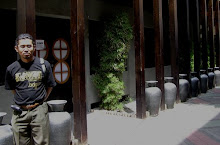A Study on the History and Development of the Javanese Mosque part 3
Typology of the Plan and Structure of the Javanese Mosque and Its Distribution
Bambang Setia Budi
Doctoral Candidate, Department of Architecture and Civil Engineering, Toyohashi University of Technology, Japan
Abstract
This paper investigates and analyzes a typology of the plan and structure of the Javanese mosque and its distribution. The Study will focus on the plan of the main prayer hall and the soko guru principle structure (master pillar in the centre of the main prayer hall, supporting the upper hipped roof of the mosque) since these two elements and the roof are the main characteristics of the Javanese Mosque. Until today, these were generally well-preserved elements. The study investigates and analyzes 127 mosques that were constructed in th 15th-19th centuries in Java. Based on this analysis, the paper argues that the main/original mosque type is square plan with four master pillars in the centre of the main prayer hall. It also finds and argues that there are many variations on these two elements in its development, but the main type is evenly spread throughout Java Island.
Keywords: typology; plan of main oprayer hall; soko guru; Javanese mosque; distribution
----------
This paper was published in the Journal of Asian Architecture and Building Engineering (JAABE), Vol.5, No.2 November 2006.
Friday, November 10, 2006
Subscribe to:
Comments (Atom)
